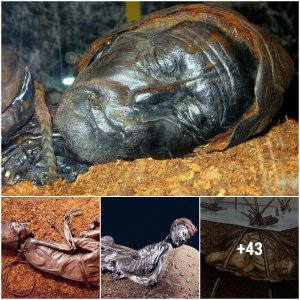In the animal kingdom, what garners respect is size, ferocity and fangs, and the sabre-toothed tiger was far up the food chain in all three categories. Modern tigers are skilled predators that can take down remarkably large prey, because they are fast, and have huge teeth and knife-sharp claws.
The species has evolved into expert hunters, and their ancestors provided today’s tigers with all the tools they need to be respected — and feared — by almost all other animals in their territory.

But today’s tigers –in fact, all modern day felines in the wild — look practically like kittens compared to the skull of an ancient species of sabre-toothed tiger found in South America several decades ago.
Amateur digger Ricardo Praderi of Uruguay wasn’t exactly sure what species the skull he found in September, 1989, belonged to; he just knew it was an important find, and immediately turned it over to the archives at the National Museum of Natural History in Montevideo.
And when PhD student Aldo Manzuetti heard stories about the super-sized skull in storage at the museum, he just had to take a peek at it himself. Manzuetti is in a doctoral program at the University of the Republic, in Uruguay.
It was indeed huge, he said, measuring 16 inches long, so large for the species, known in scientific circles as Smilodon, he at first thought he was misusing his measuring tape.
“I thought I was doing something wrong,” he said, almost chuckling at the memory, in an interview with the New York Times in mid March. “I checked the results a lot of times, and only after doing that I realized I hadn’t made any mistakes.”
Manzuetti did a few rough calculations, and figured that this 10,000 year old animal weighed almost 1,000 pounds — double the size of a modern, male African lion. That’s one big kitty. And while it is indeed a cat, it is technically not a tiger, but even scientists use the nickname when describing the species.
When other scientists around the world heard of Manzuetti’s research, they were anxious to see his work; some even wished they could get a look at the skull up close because it is so rare. “I would love to see that,” acknowledged Dr. Margaret Lewis, a paleontologist at New Jersey’s Stockton University.

And it isn’t just the skull itself that is fascinating to scientists; it is how the cat hunted that is interesting as well. This cat’s size indicates it may have taken on giant herbivores that lived back then — sloths the size of a Volkswagen, for example.
“We’ve always wondered,” explained Dr. Kevin Seymour of the Royal Ontario Museum in Toronto, Canada, “what could take down a giant ground sloth? If Smilodon is getting this big, there’s a potential for it to be taking down these giant, adult herbivores.”
Today’s cats don’t prey on creatures larger than themselves unless they have; a tiger, for example, will fight back if charged by an elephant, but its preference is to escape.
Manzuetti’s research theorized that scarring on the skull may indicate the animal was attacked by one of its own. “If that’s true,” said Dr. Lewis, “it’s a fascinating find.” For her, however, it is what the skull represents in terms of the bigger picture that is incredibly important.

“I just keep thinking of the power, and the potential things that this animal could have been doing out there in the ecosystem,” that was developing in South America back then.
Spoken like a true scientist, an expert in how nature developed and evolved, and the animals that thrived or went extinct, like the sabre-toothed tiger, who, it turns out, was never an actual tiger at all.





